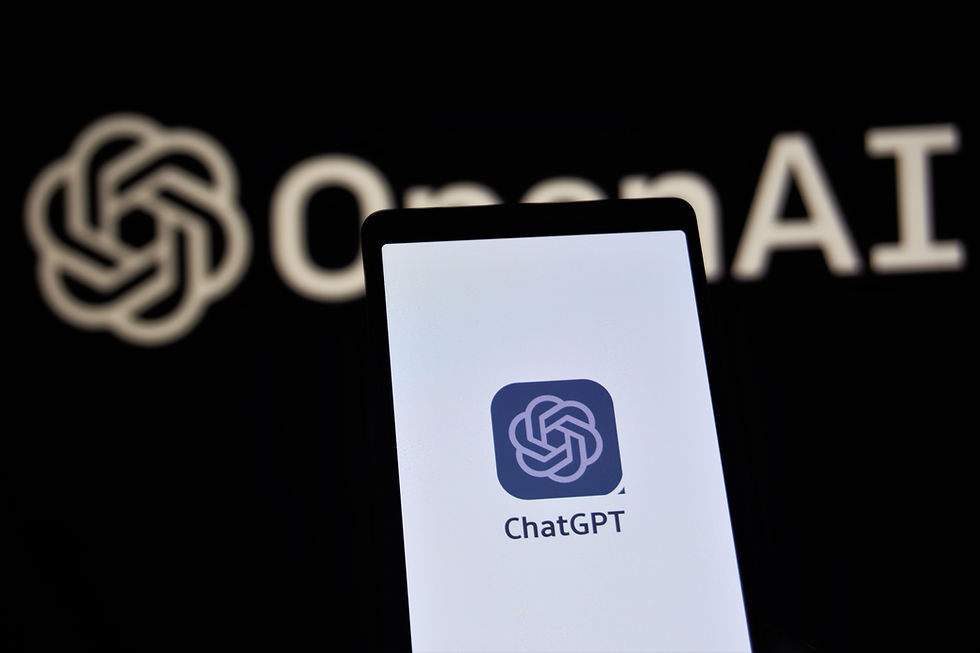Artificial Intelligence for Planning an Emergent and Inquiry Based Early Childhood Curriculum
- paulawalshe
- Jun 23, 2023
- 4 min read
Could artificial intelligence, such as ChatGPT, be a useful planning tool to support the facilitation of an emergent and inquiry based curriculum?

Early childhood educators have a responsibility to provide a high-quality, developmentally appropriate curriculum that meets the needs of diverse learners. Many educators achieve this through the implementation of an emergent and inquiry-based curriculum. This type of curriculum encourages learning through exploration and investigation with the role of the educator being that of a facilitator who provides resources and experiences tailored around children's ideas and interests. However, when there are lots of children with lots of different interests, how can the educator tailor the learning experience to meet each child's interests, short of having an encyclopaedic knowledge of every possible interest area? Could artificial intelligence, such as ChatGPT for example, be a useful planning tool to support the facilitation of an emergent and inquiry based curriculum? Although there is no replacement for quality interactions in the learning environment, perhaps AI can be used as a curriculum planning or activity planning tool by ECEC educators? So what are the possible benefits of utilising AI in this way?
1. PROVIDE RESOURCES AND PROMPTS

AI can provide a wealth of information and resources to support an emergent and inquiry-based curriculum. With AI, educators can quickly and easily search for relevant learning opportunities and resources that align with the topics or themes that children are interested in. For example, if a group of children are interested in learning about animals, AI can provide a range of videos, articles, and other materials that cater to different learning styles and abilities which they educator can then use to inform their planning. AI can also provide the educator with information on topics that may not be familiar to them which they can then as prompts to begin to engage children in conversations, art or socio-dramatic play related to the interest area. For example, information on dinosaurs or information about space.
2. ENCOURAGE CRITICAL THINKING

AI could be used to promote critical thinking and problem-solving skills. For example, AI can suggest activities or open ended questions which the educator can use to facilitate children to think outside the box and explore different approaches to problem-solving. By presenting different scenarios and challenges, AI can be used to encourage children to explore different perspectives and develop their own unique solutions to problems by supporting the educator to think outside the box or consider approaches which they may not have in the past during the planning process.
3. SUPPORT CREATIVITY AND COLLABORATION

AI can provide an opportunity to support children's creativity by providing them with a safe environment to explore and experiment with their ideas. For example, AI can provide tools that allow children to develop their own digital creations or participate in collaborative projects with other children (under adult supervision of course). This can encourage children to express themselves in different ways and develop new skills that they may not have had the opportunity to explore otherwise. For examples, children can collaborate with each other to come up with design ideas and ask AI to create any imaginary creature, building, person or place with any unique attributes they wish. This could then be extended into a hands on creative arts activity in the classroom using art materials or socio-dramatic play. Using AI in this way can provide a platform for children to share their ideas, provide feedback to one another, and contribute to a shared learning experience therefore promoting collaboration and the development of social and emotional skills, such as communication, cooperation, and conflict resolution.
4. IMPROVE ACCESSIBILITY AND INCLUSION

AI can improve accessibility and inclusion in early childhood education by providing resources that cater to different cultures, learning styles and abilities. For example, AI can provide materials in multiple languages or with visual aids for children with vision impairments. This can ensure that all children have access to a high-quality education, regardless of their background or ability. AI can also be used to translate communications for parents into their home language or provide information to educators on various different cultures and communities.

In conclusion, AI can be a very useful tool for early childhood educators as they facilitate an emergent and inquiry-based curriculum. By providing resources on endless emergent interest possibilities, encouraging critical thinking of both the educator and the children, supporting creativity, facilitating collaboration, improving accessibility and inclusion, AI used responsibly, may enhance children's learning experiences and provide more personalized and engaging opportunities for exploration and investigation. While AI will never be a replacement for human interaction and creativity, if used responsibly and appropriately, it could certainly be a very useful planning resource for early childhood educators as they support children's learning and development as part of an emergent and inquiry based curriculum.
About the Author:

Paula Walshe is a published author, PhD student and Assistant Lecturer in ECE at Dundalk Institute of Technology. Her PhD research focusses on STEAM (science, technology, engineering, the arts and maths) in ECEC.
In 2023 Paula published her first book entitled "Síolta in Practice" which is a guide to implementing Síolta quality standards in ECEC. It is published by Boru Press and is available here.
Paula has also co-founded a Twitter community of practice page and podcast @ECEQualityIrl . You can listen to the most recent ECE Quality Ireland podcast here.
You can contact Paula or learn more about her work here. LinkedIn: Paula Walshe / Twitter: @walshe_paula / Instagram: @digitalearlychildhoodeducator






Comments